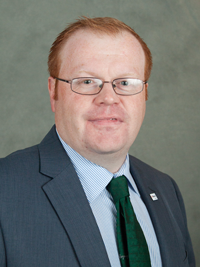Preparing for lactation end

Cathal Bohane
Head of InTouch Nutrition
The temptation is to keep grazing if the weather allows, as farms are trying to shorten the winter and also balance a possible under-supply of conserved forage. Poor growth, combined with higher demand and stocking, has quickly eaten into an extended rotation reserve. Spring will come around fast, and having higher-quality forage then to match yields in the high 20s, as opposed to their yield now, will be more advantageous.
Cows have responded well to supplementary feeding over the last few months. There is no rocket science in how this happened – intake and protein. Farms that were possibly underfeeding are now meeting the demands of the cows, and while sometimes silage doesn’t look ideal on paper, a kilo of something is better than a kilo of nothing. It also has a higher dry matter than grazed grass, especially on those wet days. Additionally, the inclusion of protein will push intake, yield, and help digest the energy of the diet. While protein is expensive and there are some valid derogation reasons to reduce the level in the diet, we must remember that protein drives production on the farm, and if dropped too low, output will struggle. On top of this, a lot of grazed grass samples were very low in protein this year.
The question will now arise as to whether it is feasible to continue milking cows for the next few weeks. While it has generally been an expensive year, the decision should be made based on current circumstances. With high solids percentages, the milk price per litre will be in the 50s, so if a cow is still producing 12 litres, this cow is still producing €6.50 worth of milk. However, on the other hand, when you look at the standard diet, she may be consuming around 50kg of silage and 4-5kg of meal. This would cost approximately €4 in feed alone using book values, and when you add all the other costs, it might not fully stack up. We need to be conscious of the alternative: if they were dry, they would eat €2.50 worth of silage and obviously produce nothing. So, you need to consider the difference in feed cost of €4 minus €2.50, or a €1.50 additional feed cost to produce the milk.
We also need to be mindful of a few things. We should assess body condition and see if we are on target. Improving body condition also adds value to the farm and shouldn’t be undervalued. Heifers and some cows that have struggled might need a few extra weeks of downtime, but we certainly don’t need a long extended dry period for the main herd, especially for cows calving later in the spring, when excess body condition can become an issue leading to metabolic problems.
Make a plan for the next few weeks: continue to assess body condition score, test silage for nutrients and minerals if not already done, and work out drying dates. Silage stocks also need to be considered, and for cows that will not be present next year, it may be necessary to move them on now.







